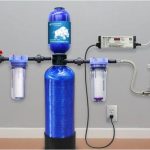If you’re like most people, you probably don’t give much thought to the water that comes out of your taps. But the fact is, the water coming out of your taps may not be as clean and safe as you think. In fact, it may contain harmful contaminants that can put your health at risk.
That’s why it’s important to find the right water filtration system for your home. In this blog post, we will discuss the different types of water filtration systems available and help you choose the one that is best for you and your family!
What Is a Water Filtration System?
A water filtration system is a device that removes impurities from water using a physical barrier, chemical process, or biological process. Filters can be used to remove suspended particles, bacteria, viruses, and other contaminants from water.
There are many different types of water filtration systems available on the market as reviewed on: QWL. Some are designed for whole-house filtration while others are designed for specific appliances such as your kitchen sink or showerhead.
What Are the Different Types of Water Filtration Systems?
There are four main types of water filtration systems: activated carbon filters, reverse osmosis filters, ultraviolet (UV) light systems, and distillation systems.
Activated carbon filters are one of the most common types of water filters. They work by adsorbing impurities onto the surface of the filter. Activated carbon filters can remove a wide range of contaminants, including chlorine, lead, and VOCs (volatile organic compounds).
Reverse osmosis filters are another common type of water filter. They work by forcing water through a semipermeable membrane, which removes impurities from the water. Reverse osmosis filters can remove a wide range of contaminants, including dissolved minerals, bacteria, and viruses.
Ultraviolet (UV) light systems use UV light to kill bacteria and viruses in water. UV light systems are effective at removing bacteria and viruses, but they do not remove other contaminants such as chemicals or dissolved minerals.
Distillation systems work by heating water to a boiling point and then collecting the resulting steam. The steam is condensed back into water, which leaves impurities behind. Distillation systems can remove a wide range of contaminants, including dissolved minerals, bacteria, and viruses.
How to Choose the Right Water Filtration System for Your Home?
Now that you know the different types of water filtration systems available, how do you choose the right one for your home? There are a few factors to consider when choosing a water filtration system.
- The first factor to consider is the type of water you have. If you have municipal water, it is likely that your water has already been treated and is safe to drink. However, if you have well water, it is important to test your water for contaminants before choosing a filtration system.
- The second factor to consider is the contaminants you want to remove. Not all water filtration systems are designed to remove the same contaminants. For example, an activated carbon filter will not remove viruses, and a reverse osmosis filter will not remove chemicals.
- The third factor to consider is the cost of the water filtration system. Water filtration systems can range in price from a few dollars to several thousand dollars. The cost of the system will depend on the type of system, the quality of the system, and the features it offers.
- The fourth factor to consider is the maintenance required for the water filtration system. Some systems require more maintenance than others. For example, reverse osmosis filters need to be replaced regularly, and UV light systems need to be cleaned periodically.
- The fifth factor to consider is the warranty. Most water filtration systems come with a limited warranty. It is important to read the fine print of the warranty to make sure you are covered in case of a defect or malfunction.
Getting a Water Test
If you are unsure of what contaminants are in your water, the first step is to get a water test. You can contact your local municipality or water utility to get a water test. Water tests typically cost around $50 and take about two weeks to complete.
It’s relatively easy to do a water test yourself with a home water testing kit. These kits are available at most hardware stores and typically cost around $20. Home water testing kits can test for a variety of contaminants, including bacteria, lead, and chemicals.
If you have well water, it is important to test your water at least once a year according to the EPA for bacteria and nitrates. You should also have your water tested if you notice a change in taste, odor, or appearance.
Making a Decision
Once you have the results of your water test, you can narrow down your choices for a water filtration system. If your water contains bacteria or viruses, you will need to choose a system that can remove these contaminants.
Final thoughts
Choosing the right water filtration system for your home can be a daunting task. However, by taking the time to understand your options and what contaminants are in your water, you can make an informed decision. Don’t forget to get a water test before choosing a system, and always read the fine print of the warranty.
Related Posts













Hey, excellent writing.
Your infant requires a deep latch to get enough milk and to keep your nipples from getting damaged and irritated. Position him on his side so that his tummy is right up to yours before putting him on your breast. Then, with your nipple, tickle his mouth to encourage him to expand wide; make sure he takes the entire nipple and a significant bit of your areola in his mouth.
To learn more visit: https://infansy.store/